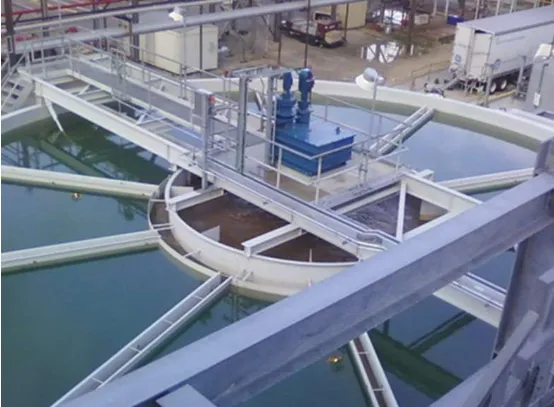
-
 Afrikaans
Afrikaans -
 Albanian
Albanian -
 Amharic
Amharic -
 Arabic
Arabic -
 Armenian
Armenian -
 Azerbaijani
Azerbaijani -
 Basque
Basque -
 Belarusian
Belarusian -
 Bengali
Bengali -
 Bosnian
Bosnian -
 Bulgarian
Bulgarian -
 Catalan
Catalan -
 Cebuano
Cebuano -
 China
China -
 China (Taiwan)
China (Taiwan) -
 Corsican
Corsican -
 Croatian
Croatian -
 Czech
Czech -
 Danish
Danish -
 Dutch
Dutch -
 English
English -
 Esperanto
Esperanto -
 Estonian
Estonian -
 Finnish
Finnish -
 French
French -
 Frisian
Frisian -
 Galician
Galician -
 Georgian
Georgian -
 German
German -
 Greek
Greek -
 Gujarati
Gujarati -
 Haitian Creole
Haitian Creole -
 hausa
hausa -
 hawaiian
hawaiian -
 Hebrew
Hebrew -
 Hindi
Hindi -
 Miao
Miao -
 Hungarian
Hungarian -
 Icelandic
Icelandic -
 igbo
igbo -
 Indonesian
Indonesian -
 irish
irish -
 Italian
Italian -
 Japanese
Japanese -
 Javanese
Javanese -
 Kannada
Kannada -
 kazakh
kazakh -
 Khmer
Khmer -
 Rwandese
Rwandese -
 Korean
Korean -
 Kurdish
Kurdish -
 Kyrgyz
Kyrgyz -
 Lao
Lao -
 Latin
Latin -
 Latvian
Latvian -
 Lithuanian
Lithuanian -
 Luxembourgish
Luxembourgish -
 Macedonian
Macedonian -
 Malgashi
Malgashi -
 Malay
Malay -
 Malayalam
Malayalam -
 Maltese
Maltese -
 Maori
Maori -
 Marathi
Marathi -
 Mongolian
Mongolian -
 Myanmar
Myanmar -
 Nepali
Nepali -
 Norwegian
Norwegian -
 Norwegian
Norwegian -
 Occitan
Occitan -
 Pashto
Pashto -
 Persian
Persian -
 Polish
Polish -
 Portuguese
Portuguese -
 Punjabi
Punjabi -
 Romanian
Romanian -
 Russian
Russian -
 Samoan
Samoan -
 Scottish Gaelic
Scottish Gaelic -
 Serbian
Serbian -
 Sesotho
Sesotho -
 Shona
Shona -
 Sindhi
Sindhi -
 Sinhala
Sinhala -
 Slovak
Slovak -
 Slovenian
Slovenian -
 Somali
Somali -
 Spanish
Spanish -
 Sundanese
Sundanese -
 Swahili
Swahili -
 Swedish
Swedish -
 Tagalog
Tagalog -
 Tajik
Tajik -
 Tamil
Tamil -
 Tatar
Tatar -
 Telugu
Telugu -
 Thai
Thai -
 Turkish
Turkish -
 Turkmen
Turkmen -
 Ukrainian
Ukrainian -
 Urdu
Urdu -
 Uighur
Uighur -
 Uzbek
Uzbek -
 Vietnamese
Vietnamese -
 Welsh
Welsh -
 Bantu
Bantu -
 Yiddish
Yiddish -
 Yoruba
Yoruba -
 Zulu
Zulu
FRP Fuel Tanks for Efficient and Lightweight Storage Solutions in Modern Applications
Understanding FRP Fuel Tanks Benefits and Applications
In the realm of modern fuel storage solutions, fiber-reinforced plastic (FRP) fuel tanks have emerged as a frontrunner, offering remarkable advantages over traditional materials. With the increasing demand for durable, lightweight, and corrosion-resistant storage options, FRP fuel tanks are gaining traction across various industries, including automotive, aviation, and marine sectors. This article delves into the characteristics, benefits, and applications of FRP fuel tanks.
What is an FRP Fuel Tank?
An FRP fuel tank is a type of storage solution constructed from fiber-reinforced polymer, which is a composite material made by combining polymers with reinforcing fibers, typically fiberglass. This composite structure grants the tank enhanced strength while maintaining a lightweight profile, making it ideal for applications where weight is a concern. Unlike traditional metallic tanks, FRP tanks are resistant to corrosion and degradation caused by chemical exposure, making them suitable for storing a wide range of fuels and chemicals.
Advantages of FRP Fuel Tanks
1. Corrosion Resistance One of the most significant advantages of FRP fuel tanks is their exceptional corrosion resistance. Traditional metal tanks are prone to rust and degradation when exposed to fuels and environmental conditions. In contrast, FRP tanks do not corrode, ensuring a longer lifespan and reducing maintenance costs.
2. Lightweight Construction FRP tanks are significantly lighter than their metal counterparts. This feature is particularly beneficial in applications where weight reduction is critical, such as in aviation and marine industries. The lightweight nature allows for more efficient transportation and installation.
3. Customization Options FRP fuel tanks can be molded into various shapes and sizes, allowing for customization that meets specific operational needs. Whether it's a large storage tank for a fueling station or a compact tank for a recreational vehicle, FRP materials can be tailored accordingly.
4. Environmental Impact The production of FRP tanks often entails less environmental harm compared to traditional materials. Additionally, their long lifespan reduces the need for replacements, minimizing waste. Moreover, the resistance to leakage further contributes to environmental safety.
5. Thermal Insulation FRP tanks exhibit excellent thermal insulation properties. They can help maintain the desired temperature of the fuels stored within, reducing energy loss and enhancing operational efficiency.
frp fuel tank

Applications of FRP Fuel Tanks
The versatility of FRP fuel tanks allows them to be utilized across several applications. Key sectors include
1. Automotive FRP tanks are increasingly used in electric and hybrid vehicles, where every kilogram of weight saved contributes to energy efficiency and performance.
2. Aviation The aerospace industry capitalizes on the lightweight and durable nature of FRP for fuel storage solutions, enabling improved aircraft performance and fuel economy.
3. Marine In maritime industries, FRP fuel tanks are a common choice due to their resistance to saltwater corrosion, ensuring longevity and reliability in challenging environments.
4. Industrial Storage Manufacturers use FRP tanks for the storage of chemicals and fuels in industrial settings, taking advantage of their resistance to chemical attack and lightweight properties.
5. Mobile Applications FRP tanks are ideal for mobile fuel storage applications, such as in fuel delivery vehicles and outdoor generators, where weight and portability are crucial.
Conclusion
In conclusion, FRP fuel tanks represent a significant advancement in fuel storage technology, offering numerous advantages that cater to modern demands across various industries. Their combination of corrosion resistance, weight savings, customization capabilities, and environmental safety makes them a preferred choice for many applications. As industries continue to seek efficient and durable solutions, the adoption of FRP fuel tanks is likely to increase, setting the stage for a sustainable future in fuel storage.









